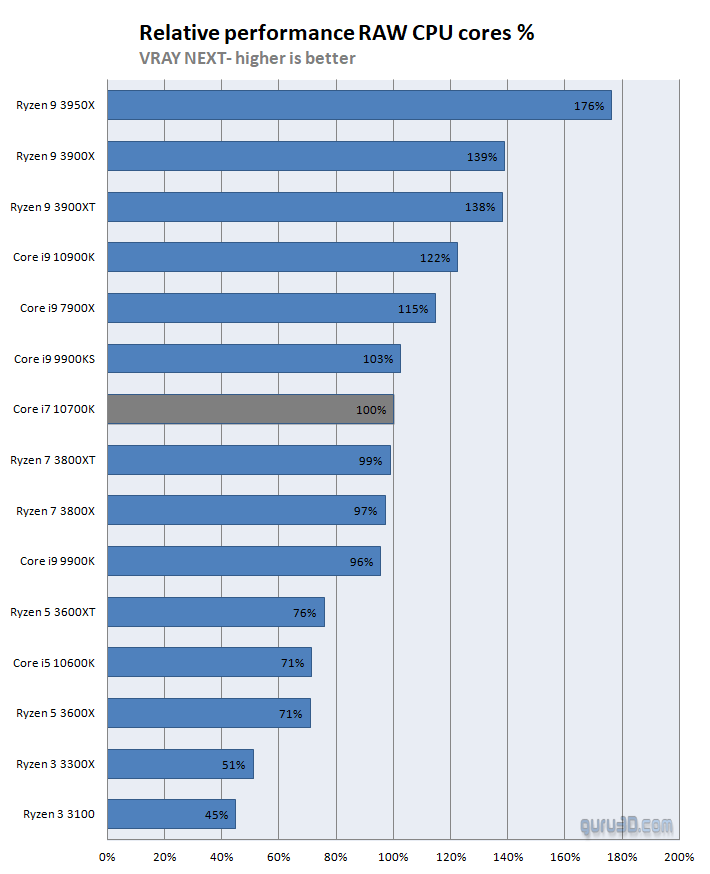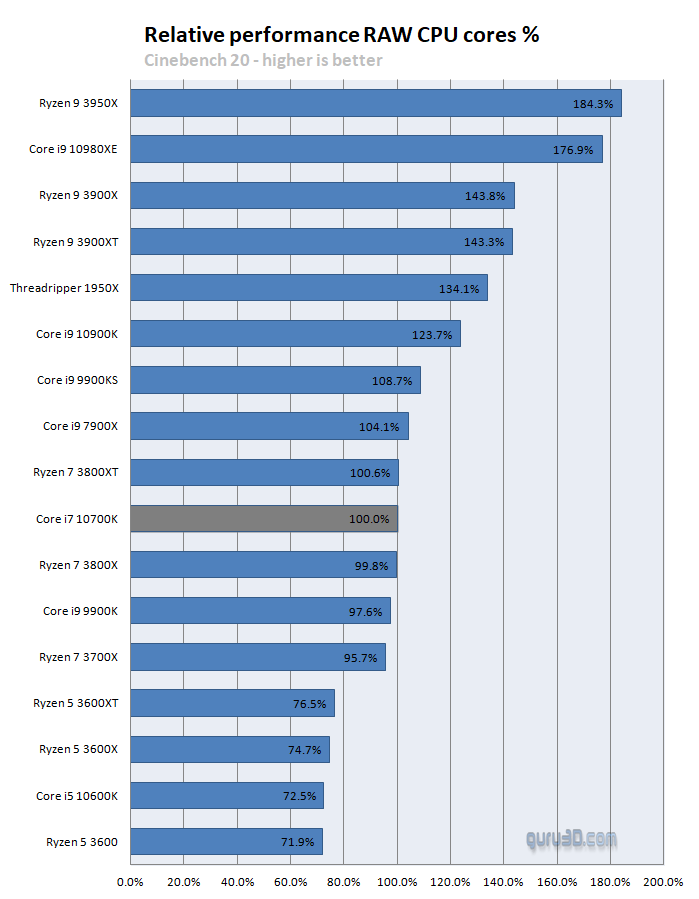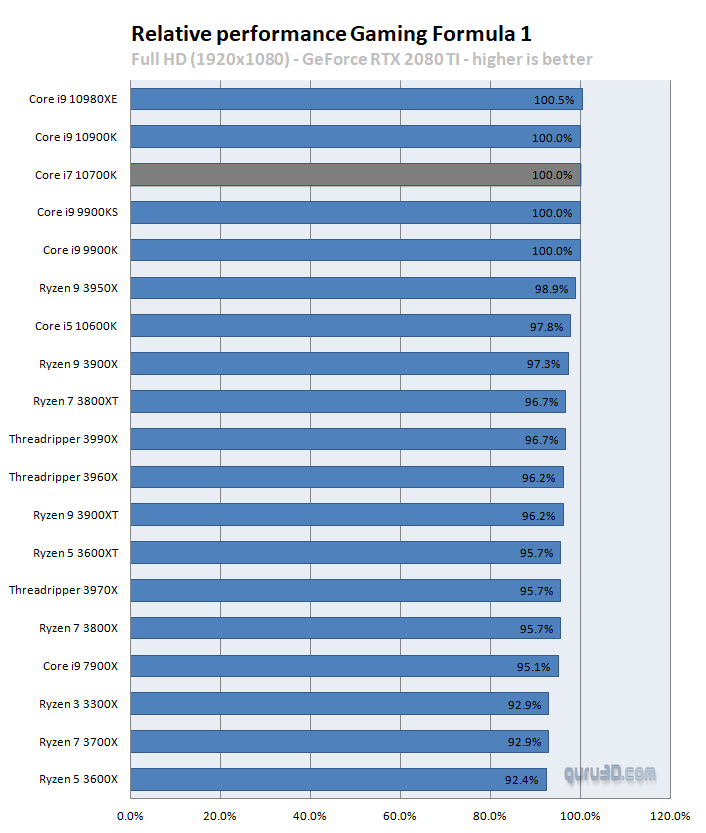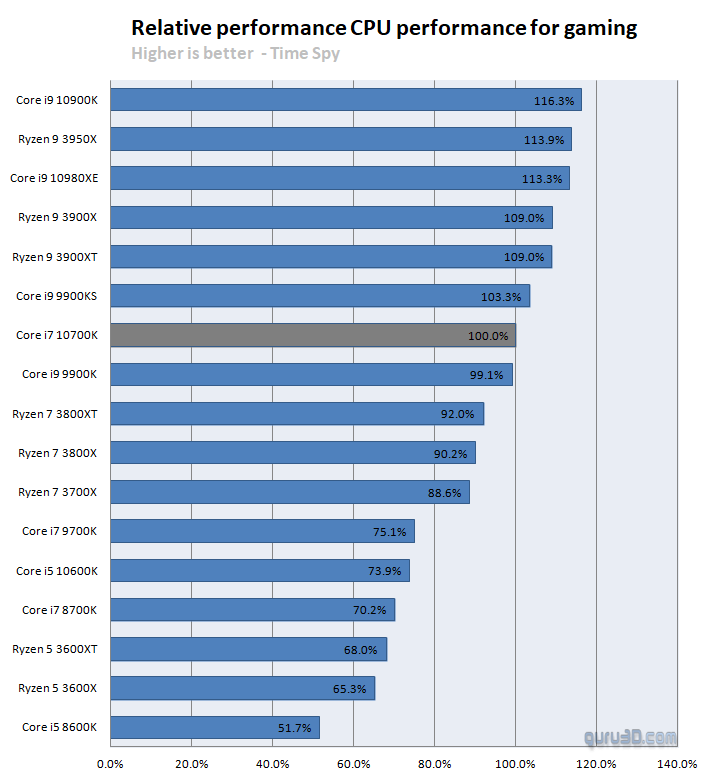Relative performance indexes
Performance Summary (relative in %)
Averaged relative performance values in percentages are always a bit dangerous to include, as the accumulation of numbers can have a more positive or negative effect on many variables, like the number of cores an application supports, and some software simply likes faster clocks and fewer threads or favors a certain microarchitecture. The averaged out numbers on this page are thus serving as a relative matched index. While not precise for some target charts (as software differs), it does show an index of what to reasonably expect for your real-world experience relative to the performance. Over time this result set will build up.
For chart scaling purposes, I left out the Threadrippers here as especially the 32 and 64-core procs completely warp the charts, we have to blame AMD for that.
The above (last) chart is a bit of a thesis chart, basically a prognosis of what might become the best gaming processors in the years to come if you take certain variables into account. We make the subjective assumption that games in 2020 and later will make good use of up to roughly 10 CPU cores or threads. If you have a many-core CPU with faster Turbo bins (say, an eight-core processor that can run 4.5 GHz on many of its cores opposed to another 8-core proc that does the same at 4000 Mhz, or an 8-core proc with better IPC), then in this chart you can see what processor would be best for future games. Remember though, you are looking at probable best CPU performance for games once they become properly threaded, not relative game performance.





